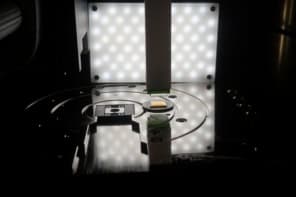Budding physicists learn at an early age that electrical resistance opposes the flow of charge, and is an inherently positive quantity. But researchers from Turkey and Germany studying 2D electron gases at low temperatures in a semiconductor now claim to have witnessed "negative resistance". They say that the odd effect could be used to make tiny sources of terahertz radiation, which can normally only be produced in much larger devices such as synchrotrons (Phys. Rev. Lett. 98 186801).
In a normal conductor, electrical current is a result of charged particles – usually electrons – being forced to move by an electrical field applied across two terminals. Along their way the electrons will often be hindered by ions and impurities, which collide with the electrons causing resistance and hence energy loss.
Negative resistance, therefore, ought to imply that energy is somehow being supplied to the electrons, making them move faster. Trouble is, energy cannot appear from nowhere without breaking the first law of thermodynamics, which states that energy must be conserved in an isolated system.
Ismet Kaya of Sabancı University in Turkey and Karl Eberl of the Max-Planck Institute in Germany, however, say that negative resistance can occur in a conductor containing three terminals in a line. In theory, some of the energy lost to resistance by electrons travelling from the first terminal to the second could find its way to electrons passing from the second to the third terminals. These energized electrons would then move with a forward current in a reversed electric field – in other words, having a negative resistance – while obeying the first law of thermodynamics.
The problem with the theory is that it requires a number of “hot” electrons from the first section to cascade in a beam into the second section where they can pass on their energy. But this would normally be prevented by the Pauli exclusion principle, which ensures that electrons have a uniform distribution of energy in all directions. Kaya and Eberl got around this by creating a small, 10 µm long structure made from GaAs and AlGaAs, in which electrons behave as a 2D gas. By cooling the structure down to 4.2 K, electrons injected into the first terminal could momentarily sideline the exclusion principle and make the necessary energy transfer.
Kaya told Physics Web that the negative resistance effect could be harnessed to make a source of terahertz radiation, simply by adding an inductor into the structure. Terahertz radiation, which lies sandwiched between the microwave and infrared regions of the electromagnetic spectrum, could one day enable data to be transmitted at high rates, but can currently only be produced in large facilities such as synchrotron particle accelerators.



